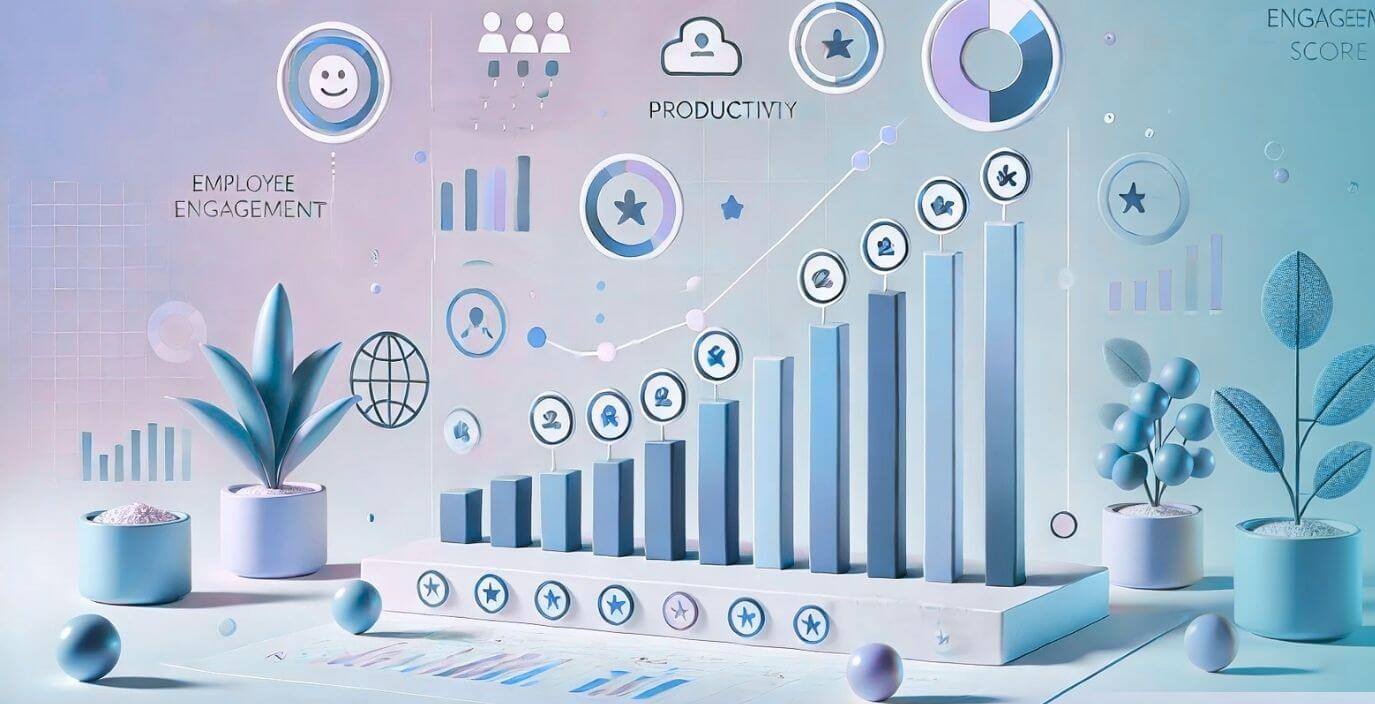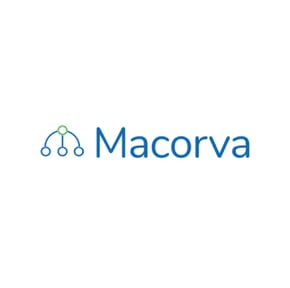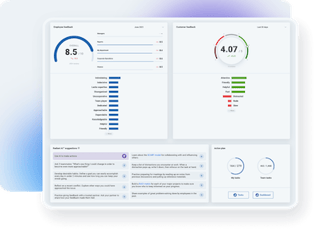
8 Free or Low-Cost Initiatives to Boost Employee Engagement
Engaged employees are essential to the success of any company, big or small. Their dedication directly impacts everything from happy customers to increased profits. Yet, according to recent Gallup data, U.S. employees are currently at a 10-year low for engagement. In today’s “war for talent,” engaged employees are especially valuable because they are the most likely to remain committed to the company, even when lucrative opportunities arise elsewhere.
While every company can benefit from investing in initiatives that boost employee engagement through this low period, many lack the budgets for such programs. In 2025 and beyond, companies need strategies to attract, recruit, and retain new talent through engagement initiatives. But just because employee engagement is valuable doesn’t mean it also has to be expensive. Continue reading for our guide to 8 low-cost, high-impact ways to increase employee engagement in your organization.

1. Embrace Work-Life Harmony
Many companies believe that offering remote, hybrid, and on-site work options will universally improve employee well-being and engagement. However, recent Gallup data shows that while remote employees report a better work-life balance compared to on-site and hybrid employees, they experience burnout at roughly the same rate. As remote work options become more common, mental health support for those employees will become a bigger priority for leading businesses moving forward.
Gallup’s 2024 State of the Global Workforce report also demonstrated that an employee’s level of engagement correlated positively to their overall life experiences, including feelings of thriving and enjoyment. Notably, employees who reported being “actively disengaged” in their work reported higher levels of stress and anger even than those who were unemployed.
By embracing work-life harmony, businesses can help employees structure their workdays in a way that promotes productivity and engagement while reducing stress and negativity. Modern technologies such as remote engagement platforms make it easier for team leaders to connect with employees in remote and hybrid work settings, regardless of where they’re located.
Achieving work-life harmony means helping employees devote equal attention to their work and personal life each day. This balance is easier to achieve when employees can access learning materials on the device they prefer. However, access alone is not sufficient to achieve a harmonious integration between personal and work-related tasks.
Remote engagement platforms take work-life harmony to the next step by offering tools such as Slack and Google Teams to keep projects flowing. By generating personalized action plans from employee insights, these programs help managers guide employees to a better balance between their career goals and personal needs. The ability to offer personalized career development resources has a proven positive impact on an employee’s engagement, productivity, and retention rate, especially in remote positions, by giving them a better chance to achieve work-life harmony every day.
The advent of AI-driven technologies in 2023 and its acceleration in 2024 suggest an acceleration in these trends of personalized career growth. In the coming year, businesses equipped with AI-powered analytics will be able to gauge and respond to their employees’ work-life balance challenges with far more specificity and personalization than ever before.
2. Foster a People-First Culture
A people-first culture is one where employees feel recognized and appreciated. The hallmark of a people-first workplace is frequent communication between managers and workers. 1:1 discussions that provide personalized career planning and opportunities for employee feedback represent a low-cost, high-yield method for improving engagement by making employees feel that their managers are people-first and money-second.
However, 1:1s are not the end-all for establishing productive communication channels between managers and workers. While over half of companies perform 1:1s with workers, only 1 in 4 employees strongly believe that their employer cares about their well-being. This lack of recognition can have a serious negative impact on feelings of security, happiness, and engagement. Therefore, businesses need a more comprehensive communication strategy to achieve the people-first environment that employees crave.
In addition to 1:1 meetings, managers can hold large group meetings in conference rooms or town halls to further promote transparency between employees and their team leaders. By encouraging employees to share feedback on new initiatives and interact with other teams, these collective meetings provide opportunities to demonstrate your company’s new people-first mission. The message you want to send is that managers know employees have lives outside of the workplace, and they care about how those lives are going.

3. Leverage Technology for Engagement
Engagement is a key factor in employee retention, which remains a top concern for business leaders in an age when 95% of workers are actively seeking new employment while still in their current jobs. By integrating modern technology into their engagement strategy, top-performing businesses can lower retention and attract hungry new talent. By contrast, outdated technology has been shown to lower engagement efficiency, with 83% of employees reporting a negative impact on their satisfaction and morale caused by outdated workplace applications.
Modern cloud-based software solutions are transforming how HR departments approach employee engagement. By streamlining survey processes, these tools allow for easier collection and analysis of employee feedback, giving HR valuable insights to drive improvement. Additionally, making learning resources easily accessible through the company system encourages employees to develop their skills and knowledge, which can boost job satisfaction and motivation. Moreover, organizations that integrate AI-powered analytics can tailor the technology to meet the specific needs of their workforce.

98% of organizations already use online tools to conduct employee training. By integrating artificial intelligence (AI) and machine learning (ML) technologies, you can further personalize employee experiences with real-time feedback and achievement recognition. AI can help your dedicated feedback team respond to employee needs and invest in each worker’s career development, which boosts their engagement.
With updated employee records centralized in a versatile feedback system, managers can more easily identify areas of improvement for each employee to work on while presenting feedback using clear, focused language created with the help of generative AI. Highlighting an employee’s individual challenges while recognizing their recent achievements leads to new skill acquisition and increased engagement, creating opportunities for learning that reduce their risk of turnover.
4. Prioritize Employee Voice and Feedback
Employees who feel that management listens to and applies their concerns are more likely to emotionally invest in their work, strive to achieve their company’s objectives, and adopt a hands-on approach to their career development. Since 74% of employees feel more effective and engaged at work when their voice is heard, implementing software-based feedback systems can be a low-cost way to help workers forge their own path to higher engagement.
Asking for feedback allows managers to develop a deeper connection with their employees to spot the areas that enhance or detract from their engagement. Creating a safe space for feedback empowers employees with the opportunity to change their workplace for the better, which will have a tangible positive impact on their productivity despite costing very little to implement.
Importantly, feedback is a two-way street. If managers expect employees to execute their feedback, they must also adapt their behavior to meet the employee’s needs for their leadership. For example, employee feedback often includes their assessment of the workplace’s inclusivity as a positive learning environment, which should be any modern company’s top concern when giving and receiving feedback. Employee engagement software can generate feedback surveys that provide an opportunity to acknowledge the diverse voices in your workforce and create an environment of continuous learning that reflects their changing expectations and needs.

5. Promote Career Growth and Development
Effective feedback follows the SMART method to provide employees with feedback that is Specific, Measurable, Attainable, Relevant, and Time-Based. This means giving employees the tools and resources they need to set tangible goals for their improvement based on their recent performance, the company’s objectives, and their own career goals.
By supporting career advancement, studies show that employees are more likely to remain loyal to a company in the long term. In doing so, companies can reduce turnover and save money on employee recruitment, hiring, and training. The question is: how can a modern business offer its employees more career growth opportunities than its competition? Against increasingly competitive, high-tech performance management strategies, a versatile employee engagement platform is a must for using 1:1s to create growth opportunities.
AI-enabled platforms allow team leaders to create personalized paths that provide clear career planning to each employee. Succession planning is key because as employees upskill, they will be eyeing higher-level positions and wondering if they have done enough to rise to the top of their talent pipeline. Not knowing their position in their company’s hierarchy causes many employees to seek new jobs while still in their current one.
Focusing 1:1s on an employee’s individual career plan is a cheap way to reduce turnover and slash recruitment costs, provided the manager can present a clear upskilling path that recognizes employee achievements, identifies areas of improvement, and lays out a logical career path. Employee feedback software efficiently organizes each employee’s portfolio to give managers the tools they need to make employees feel that their leaders care about their career journeys.
6. Enhance Diversity, Equity, and Inclusion (DEI)
Diversity, equity, and inclusion (DEI) is no longer about simply expressing values through leadership initiatives or stating a company’s abstract goals for inclusion. DEI is now an integral component in modern businesses, which can increase employee satisfaction, lower turnover, and improve an organization’s reputation within its industry. However, employees need to see its practical applications for it to positively impact their engagement.
To remain competitive, businesses must evolve their DEI initiatives beyond rhetoric and implement practical programs that promote gender equality, support marginalized groups, and celebrate diversity at every level of the company. To that end, leadership commitment is the foundation for successful DEI in a modern business. As managers demonstrate their involvement and support in DEI initiatives with clearly defined goals, employees will perceive their leaders to be more accountable.
To integrate DEI policies into its operational structure, modern employee engagement software distributes training materials and encourages internal communication, ensuring that DEI practices are not restricted to certain workflows. With more effective communication systems, businesses can foster an environment where all employees feel valued and respected while those who do not have an accessible way to express their concerns to their superiors.
As environments of continuous learning increase productivity, environments of continuous feedback increase inclusion. From the hiring process to the 1:1 feedback process, managers must foster an environment where employees feel welcome, safe, and included. Employee resource groups, DEI training, and inclusive DEI-themed workshops can be used to celebrate diversity and educate workers on its organizational benefits for relatively little cost.
7. Encourage Social Responsibility
Corporate social responsibility (CSR) refers to how well a company’s objectives support environmentally sustainable practices and other global social concerns. According to PwC Research, 57% of employees value environmental and sustainability policies highly in their prospective organizations, with 19% valuing it equally or even more than their salaries. In this way, CSR has progressed from a buzzword to its current status as a major factor in determining how well a company attracts and retains new talent.
Every step of the employee’s journey from the hiring process to their 1:1 feedback with management should include encouragement about how their work at the company positively impacts their society and environment. This breeds a culture of accountability, which has the most impact when it comes from the top since leaders who deliver on commitments are more likely to encourage their team members to do the same through feelings of mutual trust.
Use 1:1s as an opportunity to highlight the impact of the employee’s achievements on their workplace culture and society. Emphasize sustainability efforts being made within the organization and how the employee can contribute. Additionally, invite employees to engage in company-sponsored CSR activities, which can increase their satisfaction by helping them feel that they contribute to a better future through their work.
Examples of CSR activities that promote employee engagement include:
- Company-sponsored charities
- Supporting legislation
- Practicing environmental responsibility
- Organizing community service
- Reducing carbon footprints
- Making environmentally-conscious investments
By promoting sustainable practices within the organization, business leaders can demonstrate their environmental cognizance to this crucial percentage of rising talent. Even simply talking about opportunities for sustainability is a no-cost way to tell employees that their management actively cares about the same values they do.

8. Build Strong Team Communication and Collaboration
No person is an island, and in fact, developing strong relationships at work helps to increase engagement. An SHRM study found that employees with a workplace best friend were more productive, less likely to be stressed, and more likely to report high job satisfaction and well-being. Therefore, any activities that help employees build relationships and make friends can improve productivity and engagement, even those as simple as cross-functional get-togethers, lunch and learns, and mentorship pairings.
One high-yield way to build accountability in workplace relationships is to implement 360° feedback, which allows employees to share feedback with peers, managers, and others. Modern 360° programs like Macorva streamline this process from hours down to seconds, making end-to-end feedback more accessible to employees and less expensive to employers. Implementing 360° feedback creates an open dialogue between employees, their managers, and their co-workers, encouraging cross-team collaboration and mutual improvement.
Yet, just because accountability is a significant factor in workplace engagement doesn’t mean that the workplace can’t also be fun. A regular dose of fun increases the likelihood that employees will make friends and engage with their work. According to SHRM, employees who connect with each other treat customers better, take fewer sick days, and are more likely to stay with the organization.
Use 1:1s as an opportunity to brainstorm fun activities for employees and invite workers to participate in them. Examples of low-cost ways to improve employee engagement strategies through fun activities include potluck lunches, fantasy football leagues, volunteer days, and celebrations for important milestones like work anniversaries or product launches. Use team collaboration tools like Slack and Microsoft Teams to give employees easy-to-access methods of communicating with their friends, organizing company fun days, and engaging with their team members.
Conclusion
Employee engagement initiatives in 2025 are more important than ever. While many companies do not have a dedicated budget for employee engagement, there are plenty of ways to invest in higher engagement at little to no cost. A few strategic investments or leadership behavior changes can reap huge returns in the form of happier, more committed employees. Employee engagement software like Macorva enables managers to deploy these solutions with real-time employee feedback, career progression plans, communication tools, peer feedback reviews, and more.
Visit us to learn how businesses are using Macorva to enhance employee engagement and satisfaction on a budget, creating people-first environments of continuous learning that attract and retain talent. Contact us today to get started.
Check out these related resources posts for more information on employee engagement:
Blog - 5 drivers of employee engagement
Case study- Achieving nearly 100% employee survey participation at Mass Medical Storage
White paper - The Macorva employee engagement survey methodology
Editors note: this blog was originally published in December 2019 and has been updated for accuracy and comprehensiveness.







